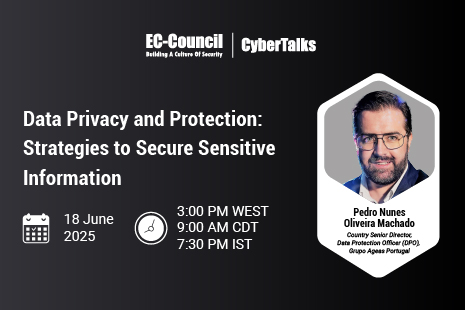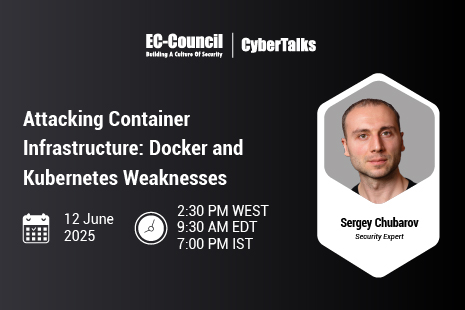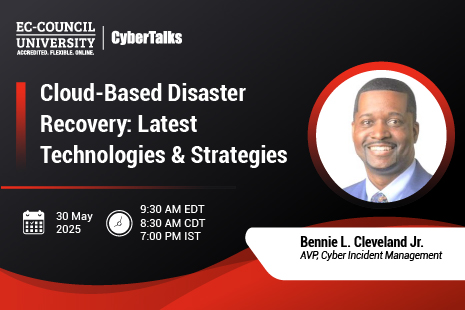The Chief Information Security Officer (CISO) is one of digital security’s most powerful and high-paying roles. As a CISO, you’ll have complete responsibility for all aspects of your organization’s data. You will also play a vital role in business strategy and help shape your company’s future.
Becoming a CISO is generally considered the final destination of one’s cybersecurity career path. However, it’s never too early to start planning a route that takes you all the way to the boardroom, even if you’re only taking your first steps in the world of information security.
Why Are CISOs in Demand?
CISO is a relatively new position in the C-Suite. However, numerous companies are deciding to appoint a dedicated director of security. Around 55% of all companies currently have a dedicated CISO on the board. Of those that don’t have a CISO, 58% say they will add this position (Navisite, 2021).
In the past, IT security was part of the remit of other senior IT leaders. The Chief Technology Officer (CTO) or the Chief Information Officer (CIO) generally took responsibility for preventing cyberattacks. These executives would work with cyber security experts within the IT team to create robust digital defenses.
However, the sheer scale of cyberthreats mean security is now a leadership issue. According to the FBI, cyber fraud has increased by almost 500% in the last five years (Federal Bureau of Investigation, 2021). The cost of a hack can run to USD 180 per individual file accessed (IBM Security, 2021).
Organizations are under constant threat from cybercriminals. That’s why it makes sense to appoint an experienced security expert who can offer guidance and support at a strategic level.
CISO is a well-paid position with an average salary of around USD 231,000 (Salary, 2022). However, executive remuneration can vary, depending on the company’s size and the job’s nature. In recent years, top-tier CISOs have commanded salaries of over USD 2.3 million (Melin, 2019).
What Does a Chief Information Security Officer's Do?
Chief Information Security Officer is an executive-level position. If you become a CISO, you will work directly with the organization’s other executives, including the CEO.
Your primary duty will be to protect your organization’s data. A Chief Information Security Officer’s responsibilities include:
- Developing a security infrastructure: You will work with a team of security managers and architects to build an operational security infrastructure. You will have a high-level overview of all groups, departments, and business units. You are also responsible for incident response and the disaster recovery plan. Keeping all these elements aligned will require excellent communication, delegation, and problem-solving skills.
- Supporting business strategy: Senior leaders spend most of their time talking about the future. What’s the smartest next step? Is it time to grow or consolidate? As a CISO, you will help your C-Suite colleagues develop business strategies that are safe and secure. You need to be a strategic thinker with a keen eye for risks and opportunities.
- Approving technology investment: The CISO works closely with the CTO and CIO to make plans about the organization’s IT infrastructure. Together, you’ll identify technological solutions that support growth without creating additional risk.
- Overseeing regulatory compliance: Handling data raises several compliance issues especially if you have customers in different jurisdictions. As CISO, you will ensure that the organization always follows the correct rules and standards. You’ll also alert the other board members if their plans might lead to compliance issues.
Data is the lifeblood of every modern company. As CISO, your job is to ensure that data flows safely and reliably throughout your organization. With cyber security under control, the company will be free to focus on its long-term strategy.
How to Become a CISO
When a company hires a new Chief Information Security Officer, they’re looking for someone they can trust completely. As CISO, you will have complete control over data security. You will also have a voice in the company’s long-term strategy.
To become a CISO, you must prove that the company can trust you in the role. You can do this by building a compelling record of accomplishment in cybersecurity. Here are the steps you can take:
1. Get the right education
Your education will be the foundation of your CISO career. At a minimum, you should have a bachelor’s degree in computer science or a related discipline. Most companies will also expect a postgraduate qualification such as a Master of Science in Cybersecurity (MSCS) (Indeed, 2021).
2. Build your technical experience
3. Get leadership experience
CISO is essentially a leadership role. Much of your energy will go into building an outstanding security team and helping them deliver your strategy. As such, you will need an exceptional background in managing, supporting, and communicating with a team. Seven years of management experience is often the minimum for CISO roles (LinkedIn, 2021).
4. Become qualified as a Chief Information Security Officer
The hardest part of the journey is often the leap from management to executive leadership. You can give yourself a boost across this divide by obtaining an up-to-date qualification that will equip you with everything you need to succeed as a CISO. The Certified Chief Information Officer (C|CISO) qualification can provide you with up-to-date information and crucial real-world experience.
5. Develop your strategic vision
When a business hires a new executive, they’re looking for someone who can lead them into the future. You will need to show that you are more than just a talented security manager you’re someone who can support growth and innovation. What strategic vision will you bring to the boardroom?
The path to becoming a CISO is long and arduous. But, if you’re genuinely passionate about security, this is your chance to become an innovative leader in the fight against cybercrime.
How to Get Started on a CISO Career Path
Every journey starts with a first step. If you’re an IT professional considering moving into security, you could start by looking at the Certified Network Defender (C|ND) certificate. This beginner’s level qualification will help you find your first job in InfoSec.
From there, it’s a matter of staying focused on building your resume. Seek every opportunity to develop the three main strands of your professional experience:
- Technical: Learn everything you can about cyber threats and countermeasures. Study security architecture across multiple platforms and learn everything about hacking methodologies.
- Managerial: Work on projects that give you a chance to manage a team. Learn leadership skills like communication, delegation, budgeting, reporting, and internal negotiations.
- Strategic: Take every chance to show initiative. Pay close attention to the way that business processes (such as cyber security measures) support business goals.
There aren’t any shortcuts on the way to the CISO office. CISO training is a matter of putting in the hours. You must spend time gaining experience, learning as you go.
Eventually, you’ll reach a point where you have five years’ experience (or relevant qualification) in the following areas:
- Governance, risk, and compliance
- Information security controls and audit management
- Security program management & operations
- Information security core competencies
- Strategic planning, finance, procurement, and third-party management
At this point, you’re ready to pursue the C|CISO certification from EC-Council. This globally recognized qualification gives you the knowledge to step into executive leadership and the practical experience to help you succeed.
Are you ready to step up to the C-Suite? Find out more about how chief information security officer training with C|CISO can unlock your ultimate career goals.
References
Navisite. (2021). The state of cybersecurity leadership and readiness. https://www.navisite.com/resources/reports-1/state-of-cybersecurity-leadership-and-readiness-report
Federal Bureau of Investigation. (2021). Internet crime report 2021. https://www.ic3.gov/Media/PDF/AnnualReport/2021_IC3Report.pdf
IBM Security. (2021). Cost of a data breach report 2021. https://www.ibm.com/security/data-breach
Indeed. (2021, April 5). How to become a chief information security officer. https://www.indeed.com/career-advice/finding-a-job/how-to-become-chief-information-security-officer
LinkedIn. (2021). Example career path: CISO (director). https://www.linkedin.com/learning/it-security-careers-and-certifications-first-steps/example-career-path-ciso-director
Salary.com. (2022). Chief information security officer salary in the United States. https://www.salary.com/research/salary/benchmark/chief-information-security-officer-salary
Melin, A. (2019, August 7). Cybersecurity pros name their price as data hacking attacks swell. L.A. Times. https://www.latimes.com/business/story/2019-08-07/cybersecurity-pros-name-their-price-as-hacker-attacks-swell











